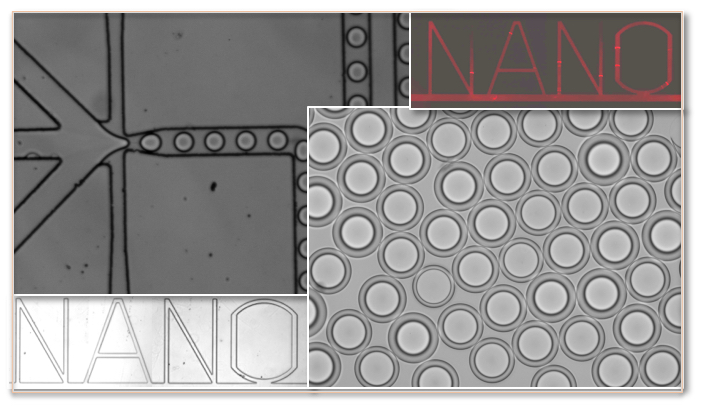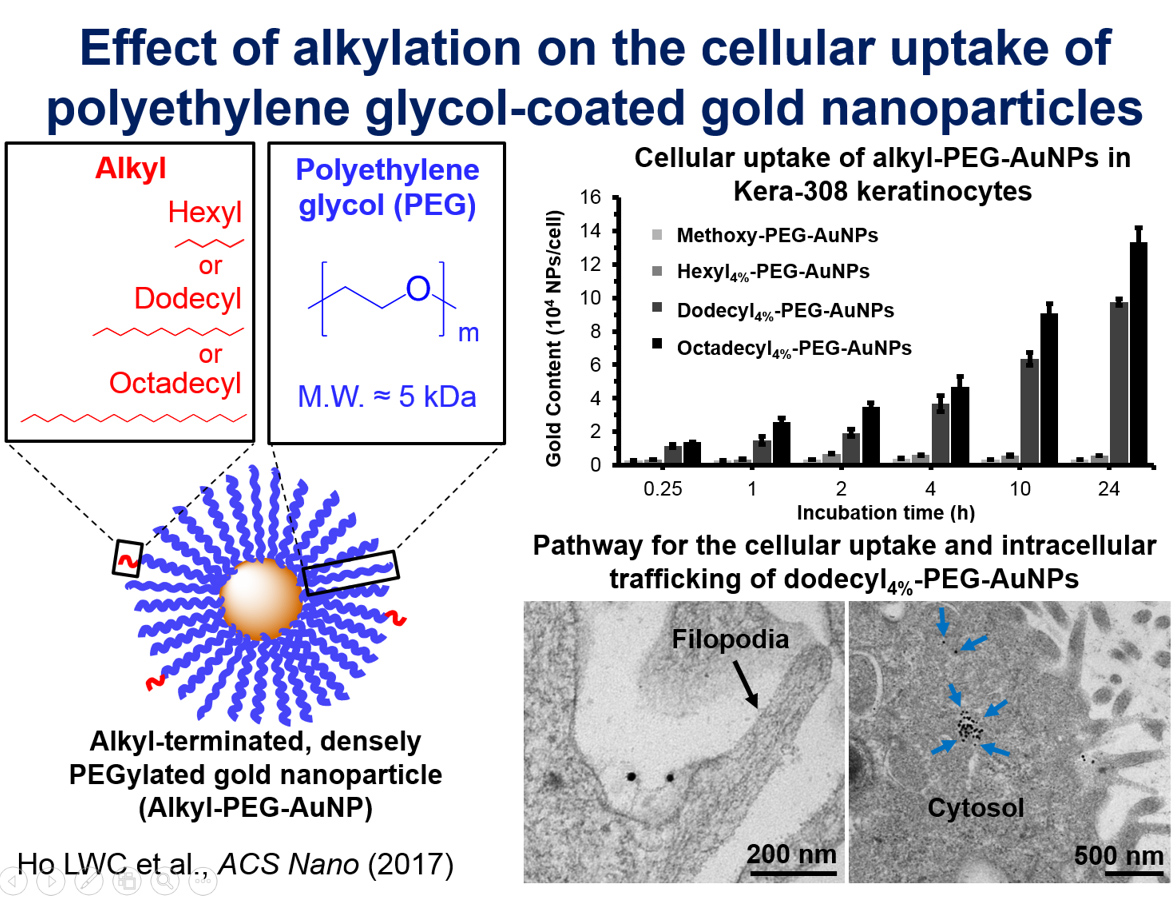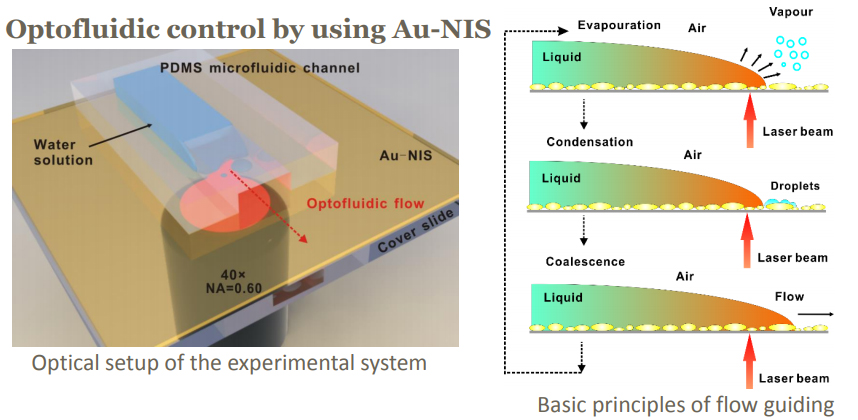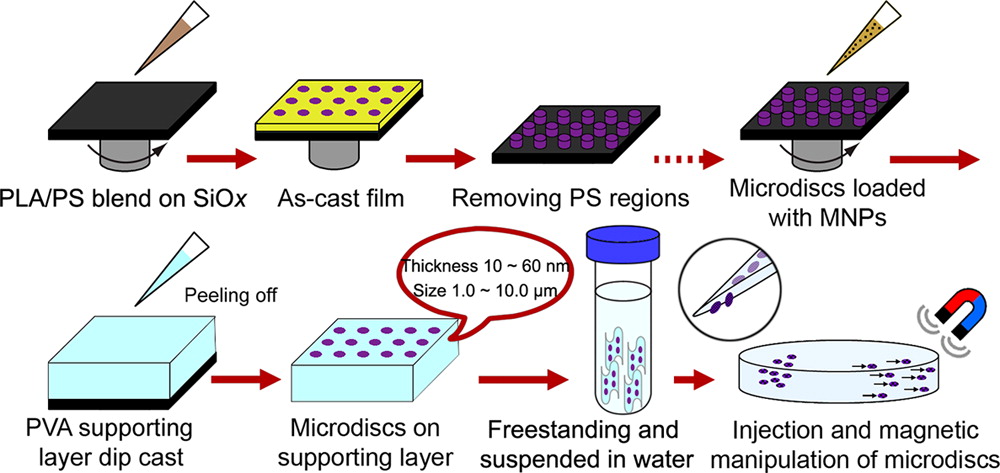Overview
Lab-on-a-chip biosensors, point-of-care devices, microfluidic manipulation and detection of biomolecules, bacterial mammalian cells, bionanotechnology and delivery of diagnostic and therapeutic molecules
Research Interests

Biosensors and BioMEMS
Our research efforts to apply the innovations of microfluidics and nanotechnology for disease diagnostics, drug screening and tissue engineering.
- Biosensors and BioMEMS:
Research in the field of biosensors and BioMEMS spans from the lab-on-a-chip, lab-on-a-disk, organ-on-a-chip, to micro- and nano-sensors. We aim to apply the innovations of microfluidics and nanotechnology to study the biomolecular interactions and to understand the cellular heterogeneity. The generated knowledge is expected to lay the foundation for future medicine on both diagnostics and therapeutics. - Affiliated Faculty Members:
Megan Yi-Ping HO, Assistant Professor
Research Interests: DNA nanosensors, droplet microfluidics, diagnostics of infectious diseases, single cell analysis, 3D culture
Details: http://www.bme.cuhk.edu.hk/ypho/research.php
Contact Us: http://www.bme.cuhk.edu.hk/ypho/contact.php


Dissection of basic "nano-bio" interactions
To design novel and functional nanostructures for targeted delivery to challenging biological sites in vivo, our research group believes the importance of dissecting the basic interactions of nanoparticles with biological structures across the vast length scales of organ, tissue, and cell.
- Organ-level distribution
- Tissue-level distribution
- Cellular-level distribution
Details: http://www.bme.cuhk.edu.hk/jchchoi/research.php

- Nano-materials for photonic and sensor applications
- Surface plasmon resonance (SPR) biosensors
- Plasmonic assisted photocatalytic process
- Semiconductor gas sensor with plasmonic enhancement
- Lab-in-a-tube
- Lab-on-a-disc
Details: http://www.bme.cuhk.edu.hk/hpho/topics.html
Optogenetics Overview:
Optical control of intracellular processes to facilitate the understanding of relevant mechanisms and develop novel therapies.
Methodology of optogenetics based on protein-protein interactions. The light-induced interaction of photosensitive proteins will actuate the activities of fused target proteins and thereby control related biological processes.


We develop different optogenetic approaches that use light to activate TrkB signaling. Utilizing the photosensitive protein Arabidopsis thaliana cryptochrome 2, the light-inducible homo-interaction of the intracellular domain of TrkB in the cytosol or on the plasma membrane is able to induce the activation of downstream MAPK/ERK and PI3K/Akt signaling as well as the neurite outgrowth of PC12 cells. P. Huang, A. Liu, Y. Song, J. Hope, B. Cui, L. Duan*. Optical activation of TrkB signaling. J. Mol. Biol. (2020). 432(13), 3761.
Details: http://ltduan.com/research/

Advanced Nanomaterials & Microrobotics Laboratory’s research interests include micro-/nanofabrication, micro-/nanomachines and their biomedical applications, nanotechnology, microfluidics, nanorobotic manipulation and self-assembly, and nanomaterials for energy storage and environmental applications.
Details: http://www.cuhklizhanggroup.com/index.php?c=content&a=list&catid=18
Publications
Bionanotechnology Lab
http://www.bme.cuhk.edu.hk/jchchoi/publications.php
DNA nanosensors
http://www.bme.cuhk.edu.hk/ypho/pub_journal.php (Journal Articles)
http://www.bme.cuhk.edu.hk/ypho/pub_book.php (Book Chapters)
http://www.bme.cuhk.edu.hk/ypho/pub_patent.php (Patents)
http://www.bme.cuhk.edu.hk/ypho/pub_conference.php (Conference Proceedings)
Biophotonics Laboratory
http://www.bme.cuhk.edu.hk/hpho/publication.html
Advanced Nanomaterials & Microrobotics Laboratory
http://www.cuhklizhanggroup.com/index.php?c=content&a=list&catid=19
Facilities
Bionanotechnology Lab
http://www.bme.cuhk.edu.hk/jchchoi/r_facilities.php
Advanced Nanomaterials & Microrobotics Laboratory
http://www.cuhklizhanggroup.com/index.php?c=content&a=list&catid=21
Nikon confocal optical microscope
https://www.nikoninstruments.com/Products/Confocal-Microscopes
Spectra-Physics Ti-Sapphire Femtosecond Laser System
http://www.spectra-physics.com/products/
875nm Raman Microscope
https://www.bruker.com/fileadmin/user_upload/8-PDF-Docs/OpticalSpectrospcopy/Raman/SENTERRA/Brochures/SENTERRA_brochure_EN.pdf
Hitachi Transmission Electron Microscopes (TEM)
http://www.hitachi-hightech.com/global/product_list/?ld=sms2&md=sms2-1&sd=sms2-1-4







